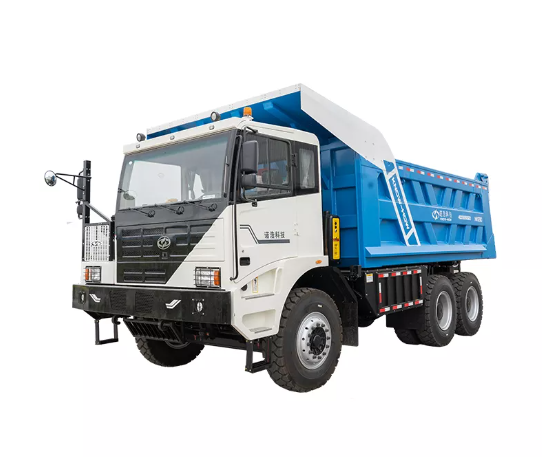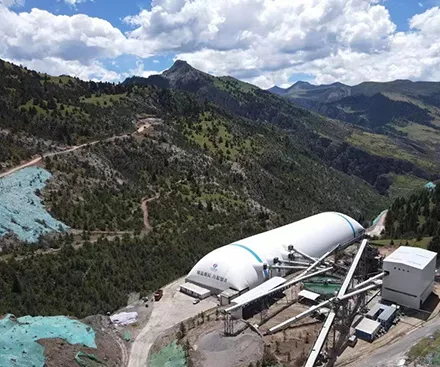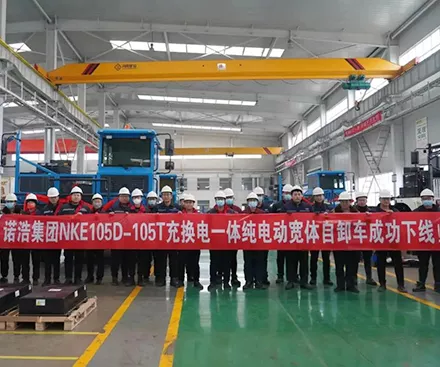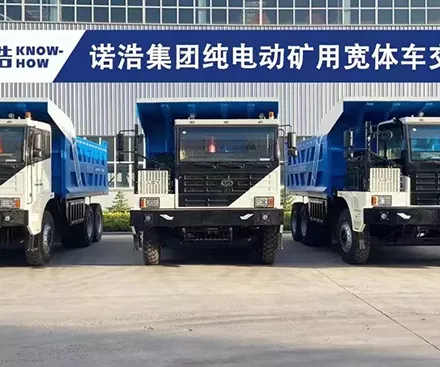In 2025, the mining industry is reaching a pivotal point in fleet modernization. As environmental, economic, and operational pressures mount, companies are seeking more sustainable and cost-efficient alternatives to traditional diesel-powered haulage systems. Among these alternatives, electric mining dump trucks have emerged as a leading solution, particularly in the 90–120 ton range, where fuel consumption, maintenance, and emissions are most pronounced.
This article presents the top five benefits of switching to electric mining dump trucks in 2025—an overview based on data-driven analysis, industry case studies, and emerging regulatory frameworks. For mining operators, logistics planners, and ESG-focused executives, this shift represents not only a technological upgrade but a long-term strategic investment.
Fuel is one of the largest operating expenses for open-pit and underground mines. Diesel prices continue to fluctuate, and remote sites often pay a premium for fuel delivery. In contrast, electric dump trucks use grid-supplied or renewable electricity, typically priced 30–60% lower per energy unit than diesel.
In recent case studies from copper and lithium mines, switching to electric haul trucks reduced fuel costs by up to $250,000 per truck annually.
Diesel engines require regular oil changes, air/fuel filter replacements, and complex drivetrain repairs. Electric trucks feature fewer mechanical systems, resulting in:
50% reduction in maintenance hours
Fewer brake replacements (due to regenerative braking)
Lower wear on hydraulic components
Reduced inventory for spare parts
As a result, some mines report extending service intervals from 500 to 2,000 hours, enabling more uptime and fewer interruptions in hauling schedules.

Electrification directly contributes to Scope 1 emission reductions, a growing requirement for mining companies seeking to maintain international compliance under frameworks such as the Global Reporting Initiative (GRI) or the Sustainability Accounting Standards Board (SASB).
Each diesel haul truck emits between 200 and 500 tons of CO₂ annually, depending on the operation. By converting a fleet of 20 trucks to electric, a single mine could eliminate up to 10,000 tons of CO₂ emissions per year.
In many jurisdictions—including Canada, the EU, and parts of Asia—companies can earn carbon credits or qualify for tax deductions when reducing on-site emissions. This not only improves compliance metrics but may create revenue opportunities in carbon trading markets.
Diesel engines generate high noise levels, especially during acceleration or under heavy loads. Electric motors, by contrast, operate with near-silent drive systems, reducing environmental noise by up to 70 decibels in some mining corridors.
This has been shown to:
Reduce worker fatigue and communication errors
Improve the safety of personnel working near haul roads
Decrease reliance on hearing protection systems
Electric trucks produce less heat than internal combustion engines. In underground mines, this translates to:
Lower ambient temperatures
Less need for expensive ventilation systems
Improved air quality (due to zero exhaust emissions)
These factors improve health outcomes and reduce the risk of equipment-related fire incidents.
Diesel trucks typically operate at 30–35% fuel efficiency. In comparison, electric mining dump trucks can reach 85–90% motor efficiency, thanks to direct drive systems and energy recovery technologies.
In mines with steep gradients, trucks benefit from regenerative braking, where energy generated during downhill travel is fed back into the battery. Some sites report up to 25% of total trip energy recovered, reducing the total energy demand per cycle.
Modern electric dump trucks are equipped with AI-powered energy monitoring systems, which optimize load distribution, braking intensity, and recharging schedules. This minimizes battery degradation and maximizes the performance of every charge cycle.
Although electric mining trucks generally involve higher upfront capital costs (up to 30% more than diesel models), the long-term savings in fuel, maintenance, and emissions compliance typically pay off within 3–5 years.
Example TCO Comparison Over 10 Years per Truck:
| Cost Category | Diesel Truck | Electric Truck |
|---|---|---|
| Fuel | $2.5M | $800K |
| Maintenance | $1.2M | $600K |
| Carbon Penalties | $300K | $0 |
| Residual Value | Lower resale | Higher resale |
| Total | $4.0M+ | $2.0–2.2M |
Electric trucks can be phased in gradually across mining operations, starting with shuttle runs or short-cycle routes. Charging infrastructure can be deployed incrementally, with options including:
Fixed charging stations
Battery swap systems
Solar-integrated microgrids
OEMs in 2025 are increasingly offering Battery-as-a-Service (BaaS) contracts and modular truck platforms to support expansion without overhauling an entire fleet at once.
Countries like Australia, Canada, and Chile have announced net-zero mining frameworks and are offering financial support for electric fleet adoption. Public-private partnerships are becoming common to reduce risk in early adoption.
Manufacturers are now offering purpose-built 105 ton to 150 ton electric mining dump trucks with improved power-to-weight ratios, faster charging (sub-60 minutes), and modular battery designs.
Downstream customers—especially in the electric vehicle and tech industries—are pressuring mines to provide sustainably sourced raw materials. Demonstrating electrified haulage improves transparency and competitiveness in global supply chains.
The mining industry of 2025 is no longer asking if electric dump trucks make sense—it’s asking how fast the transition can be completed. From reduced fuel costs and emissions to enhanced safety and long-term scalability, the benefits of fleet electrification are both measurable and transformative.
Adopting electric mining dump trucks not only aligns with current ESG requirements and energy goals but also provides a competitive edge in the face of rising global sustainability standards.
Discover the proven advantages of electric mining dump trucks through real data, tested applications, and scalable technology. If you're planning fleet upgrades in 2025 or beyond, don't just switch—switch smart.
Get the KNOW-HOW trusted by mining leaders worldwide.

Jul. 23, 2022
View More
Jun. 15, 2022
View More
Jun. 01, 2022
View More